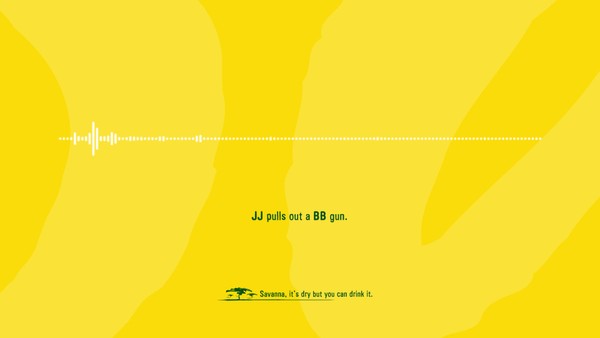Radio and Audio > Innovation in Radio & Audio
THE PRINGLESONIC CHIP
GREY, London / PRINGLES / 2022
Awards:

Overview
Credits
Overview
Write a short summary of what happens in the radio or audio work.
1 minute 24 seconds of audio binary code. When recorded on cassette tape and loaded onto a ZX Spectrum, the original gaming computer, it would reveal our 8-bit Pringlesonic Chip on screen. To some it would be an annoying shrieking noise. To the original gamers, it would be instantly recognisable as code that could be loaded onto the ZX. Decades ago, the code would reveal a game, this time we were sharing a snack.
The ear-splitting sound would have a visceral effect on anyone who heard it.
To deliver the message –we created a film edited to the precise length of the audio binary code. The film featured computer screen, with words reflecting on the history of gaming; “Before the Metaverse, Web3, AI, VR…there was 8-bit…”. It ended with a cryptic tease; “And this is for the original gamers. The O.G.s. You know who you are.”
Translation. Provide a full English translation of any audio.
N/a
Cultural / Context information for the jury
The 23rd April 2022 was the 40th anniversary of the ZX Spectrum - the ‘Speccy’. The first computer to enable games to be created at home and shared with others. The games were transmitted via a high-pitched screeching sound; audio binary code. The machine was incredibly sensitive and it required gamers to be patient - sometimes it would take hours, even days of tweaking to load a game.
Their dedication to creating and sharing games with the ‘Speccy’, in championing the activity, is why it’s often credited as a launching pad for today’s gaming industry (especially in the UK and Europe).
Today there’s still a small, but very active community of ZX Spectrum users who have continued to use this technology over the decades. There are forums and podcasts dedicated to its fans. Pringles wanted to pay tribute this niche community as pioneers of gaming.
Please outline the innovative elements of the work
It’s the world’s first snack shared via sound. We used the technology once used to share computer games to share Pringles instead. Our 1 minute and 24 seconds of binary code, when recorded on cassette tape and loaded onto a ZX Spectrum revealed the 8-bit Pringlesonic Chip and a message. The first to load the code also received a one-off can of real Pringlesonic Chips.
To create the audio, we first needed to design the visual 8-bit message using the restrictive specs of the ZX Spectrum. The image was then ‘translated’ into binary data, coded in assembly language, compiled into a tape file, tested and converted to our audio Pringlesonic code. In short; every pixel of the image became a ‘blip’ of sound. All the ‘blips’ combined to create a unique shrieking sound recognisable only to the ZX Spectrum…and, of course, its players.
More Entries from Audio Led Creativity in Radio and Audio
24 items
More Entries from GREY
24 items














